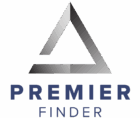
Panel interviews, when done well, can elevate your hiring process. They offer a level of insight that one-on-one conversations can’t quite match—combining multiple perspectives into one high-impact interaction. But like anything worth doing, panel interviews only work if they’re executed with clarity, structure, and intention.
Why Include a Panel Interview?
A single panel interview, inserted thoughtfully into your interview process, can significantly sharpen your hiring decisions. Here’s why it works:
-
Diverse Perspectives: Different team members bring unique lenses—technical, cultural, interpersonal—that collectively create a more complete evaluation.
-
Bias Reduction: Assessment is spread across multiple evaluators, which minimizes the weight of any one person’s bias or preferences.
-
Real-World Performance Test: You get a glimpse into how candidates perform in multi-audience settings—something that often mirrors the dynamics of real team environments.
-
Team Buy-In: When your team is part of the decision, alignment is stronger, onboarding is smoother, and ownership of the hire increases.
By adding a single panel as a final interview step, you create a mechanism that filters for excellence and reinforces alignment across stakeholders.
Set It Up for Success
Let’s break it down into three stages:
1. Before the Interview – Plan and Align
-
Select a Cross-Functional Panel: Pull from different teams to ensure you’re evaluating from all angles—not just the technical.
-
Align on Focus Areas: Meet beforehand and assign each panelist a unique lens (technical, communication, culture fit, etc.) so there’s no overlap.
-
Use a Structured Guide: Consistent questions and scoring criteria create fairness and more accurate comparisons.=
2. During the Interview – Engage and Observe
-
Assign Interview Roles: Panelists each take responsibility for specific categories, which keeps the conversation sharp and efficient.
-
Take Notes and Create Space: Encourage silence. Let candidates think through real-world problems. Their approach often tells you more than the answer.
3. After the Interview – Evaluate and Align
-
Independent Evaluations First: Don’t jump into a group discussion right away. Each panelist should submit their score and impressions independently to avoid groupthink.
-
Facilitate a Debrief: Once feedback is collected, gather for a discussion. Focus on specific examples, behavior, and the role’s core requirements—not gut feelings.
The Bottom Line
Strong hiring isn’t reactive—it’s rigorous.
A well-run panel interview adds clarity, consistency, and cross-team alignment. It’s a single step that can dramatically improve your confidence in a final decision.
-
Structure the process.
-
Assess independently.
-
Align together.
It’s how Premier companies build Premier teams.
📄 Want a head start?
Email us at info@premierfinderllc.com to get a free copy of our Panel Interview Assessment Guide—so your next round of interviews yields clear insights and confident decisions.
